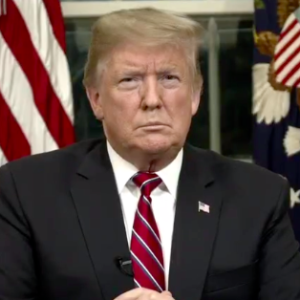The American people are about to find out what Donald Trump meant when he said he had “concepts of a plan” for healthcare reform.
It’s reasonable to expect market-oriented changes that lead to more choices, lower costs and better stewardship of taxpayer dollars.
One of the most important actions Trump could take is to let costly enhanced subsidies for exchange coverage expire at the end of 2025. Those subsidies ensure that anyone making between 100 percent and 150 percent of the federal poverty level — between $15,060 and $22,590 for an individual — enjoys no-cost, taxpayer-funded coverage.
As income goes up, enrollees have to cover a larger share of their premiums. Once they reach 400 percent of the poverty level — $60,240 for an individual — premiums are capped at 8.5 percent of income.
The subsidies are enormously expensive. The tab is expected to be $125 billion this year. That’s more than double the $57 billion that exchange subsidies cost five years ago.
Fraud is a major reason. People signing up for Obamacare have an incentive to underreport their income so they receive free coverage, courtesy of taxpayers. The Paragon Health Institute estimates taxpayers may spend $20 billion on coverage for up to 5 million people who are fraudulently enrolled this year.
Fraudulent or not, the subsidy spending amounts to a direct transfer to insurance companies. According to Paragon, half of the 21.4 million enrollees have their premiums fully subsidized by taxpayers.
Unsubsidized premiums increased 62 percent between 2014 and 2023. So insurers are claiming more and more taxpayer lucre.
Allowing the subsidies to expire would cut costs, reduce fraud, and slow the transfer of public money to insurers. In fact, it would simply restore the pre-pandemic Obamacare status quo. These enhanced subsidies were signed into law by President Biden.
Trump 2.0 will also likely put Medicaid on a diet. Medicaid and the related Children’s Health Insurance Program have grown significantly, now covering nearly 80 million people.
The first Trump administration approved waivers that tied Medicaid eligibility to work in 13 states. It’s likely that those work requirements will make a comeback.
The waivers typically mandated that beneficiaries work, attend school, volunteer, or otherwise engage in the community for 20 hours weekly. Most states made exceptions for certain people, like pregnant women and older adults.
It’s fair to ask someone to contribute to the economy or their community in exchange for taxpayer-funded health insurance — especially considering how costly that insurance is. In fiscal year 2023, Medicaid spending totaled more than $880 billion. Work requirements may compel the able-bodied to find gainful employment — and move off government dependence.
The Trump administration could also equalize what the federal government pays for those who received coverage through Obamacare’s expansion of the program to those making up to 138 percent of the poverty level with what it pays for Medicaid’s legacy enrollees.
Right now, the feds cover 90 percent of Medicaid costs for the expansion population. They cover a smaller share of the tab for the legacy population — the poor, disabled people, children and pregnant women. That gives states an incentive to prioritize enrolling the expansion population at the expense of the destitute.
Equalizing the federal Medicaid match could reduce spending and help preserve the program for those who need it most.
Finally, Americans can likely expect Trump to restore access to short-term health plans. In 2018, his administration allowed such plans to last up to 364 days — and permitted insurers to renew them for up to three years. The following year, 3 million people bought short-term plans, which are available for a fraction of the cost of those on the Obamacare exchanges.
That’s because short-term plans aren’t required to comply with costly mandates. The result is cheaper coverage that can be a good fit for healthy young adults or people between jobs.
The Biden administration reversed the Trump-era rule and capped short-term plans at just 90 days of coverage, with the option for a one-month renewal. Trump 2.0 may look to implement a reversal of its own.
With more patient choice comes a more functional healthcare market and lower costs. That’s precisely what Americans can expect with Trump.

